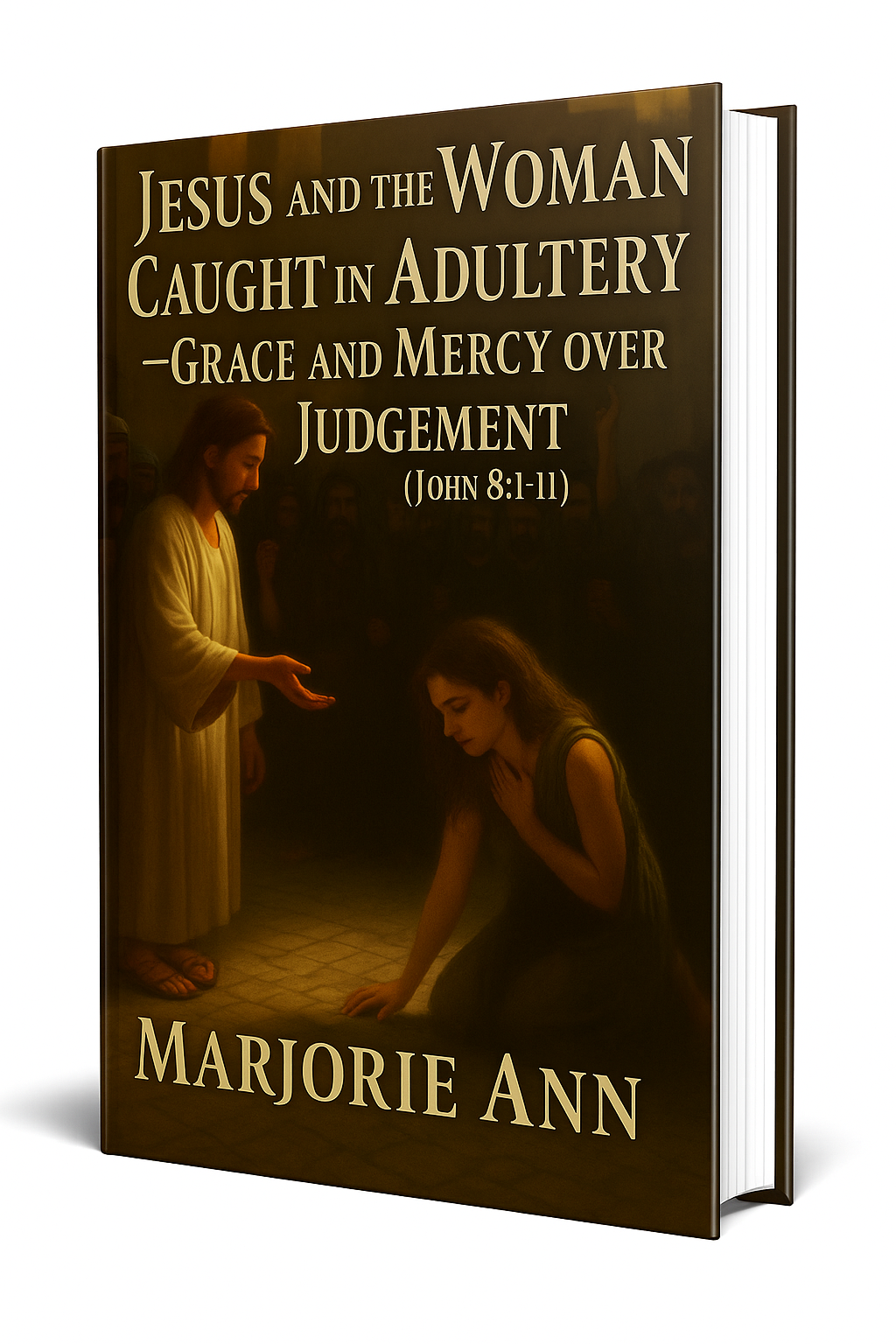The Best Bible Versions For Beginners To Read
You’re standing at the doorway of something life-changing — the pages of Scripture. You want to read the Bible, to know God better, to find guidance, comfort, and hope. But you’re not sure which translation to pick. That’s natural, and you’re not alone. In this article, you’ll find a clear, compassionate guide to the best Bible versions for beginners, practical help for choosing the right one for your needs, and encouragement to begin a lifelong journey with God’s Word.
Choosing a translation is more than preference — it shapes how you understand God’s message. You’ll find recommendations like the New Living Translation (NLT), English Standard Version (ESV), New International Version (NIV), and Christian Standard Bible (CSB) explained so you can pick what fits your heart and mind. As you read, remember the words of Jesus about the simplicity and power of God’s truth — let that be your guide as you decide which Bible to make your companion.
Why the right translation matters
When you’re new to reading the Bible, words are everything. A translation that uses clear, everyday language can make the stories and teachings come alive. A literal, word-for-word translation can be more precise for study, but it may sometimes read like a theological textbook. The goal is to find a version that helps you meet God — that lets you hear His voice in a way you can understand and respond to.
Scripture is meant to transform your life, not to confuse you. If a translation puts a barrier between your heart and God’s Word, that’s a sign it might not be the best fit for this season. You want the Scriptures to speak plainly, as in the promise: “So then faith comes by hearing, and hearing by the word of God.” Choosing from the best Bible versions for beginners helps make that hearing possible.
Understanding translation philosophies
Translations fall along a spectrum from formal equivalence (word-for-word) to dynamic equivalence (thought-for-thought). Knowing the difference helps you choose the best Bible versions for beginners based on how you learn and how you intend to use the text.
Formal equivalence aims to keep the original wording and structure as closely as possible. That helps when you’re studying theology or doing careful word studies. Dynamic equivalence seeks to convey the original meaning in natural, contemporary language. For new readers, dynamic translations often make the message more accessible so you can focus on the heart of the text rather than wrestling with archaic phrasing.
Some translations try to find a middle ground — balancing accuracy with readability. When you’re evaluating the best Bible versions for beginners, think about whether you want readability first or literal accuracy first, because that choice will guide you to the version that fits your spiritual growth.
Formal equivalence: clarity for study
If you plan to dig deep into the meaning of words, compare passages, or read with commentaries and study tools, you’ll appreciate a more literal translation. These versions tend to stick closer to the original Hebrew and Greek expressions, which can be important in serious study.
However, literal translations can sometimes be harder to read aloud or to use for devotional reading because of sentence structure and older-sounding words. For this reason, many beginners choose a more readable translation for daily devotion and switch to a literal version when they want to study.
Dynamic equivalence: clarity for everyday reading
Dynamic translations aim to communicate the sense of the original text in contemporary language. That means you’re more likely to understand a passage on first reading, and you’ll spend less time decoding grammar and syntax.
For many people taking their first steps into Scripture, dynamic equivalence is a doorway to encountering God’s message with clarity and warmth. This style is often recommended among the best Bible versions for beginners because it lowers the initial barrier and invites you into the narrative and teachings without unnecessary obstacles.
Optimal equivalence: the middle road
You don’t have to choose strictly between word-for-word and thought-for-thought. Some translations, like the CSB, aim for an “optimal equivalence” — a balance between accuracy and readability. That balance can be especially helpful for beginners who want both faithful translation and a smooth reading experience.
When you’re looking at the best Bible versions for beginners, consider whether you want a version that will serve you in both devotional life and initial study. Optimal equivalence versions are designed to do that, becoming reliable companions as your understanding grows.
Top picks: The Best Bible Versions for Beginners
You’re ready for recommendations. Here are four translations that consistently rise to the top when people ask, “What are the best Bible versions for beginners?” Each one has strengths that suit different needs — devotional reading, readability, study potential, and devotional clarity.
New Living Translation (NLT)
The New Living Translation is beloved for its clarity and warmth. It’s a thought-for-thought translation designed to make the biblical message clear in contemporary English. If you want the Bible to feel like a conversation with God, the NLT is often one of the best Bible versions for beginners.
You’ll find the NLT especially helpful for daily devotions, reading the Gospels, and understanding narrative passages. For example, look at how accessible the promise of God’s care is in the Psalms when you read with the NLT in mind. Still, remember that because the NLT is dynamic in approach, some scholars prefer a more literal translation when doing detailed exegesis.
A comforting verse to read as you begin is Psalm 119:105, a reminder that God’s Word is a lamp for your path, regardless of the translation you choose.
English Standard Version (ESV)
If you want a translation that leans more toward formal equivalence without being unreadable, the English Standard Version is an excellent choice. The ESV stays closer to the original wording and structure, which makes it popular for study and for people who appreciate a reverent, literary tone.
The ESV is frequently recommended among the best Bible versions for beginners who are planning to study Scripture deeper, attend Bible study groups, or follow sermons that reference textual details. It reads with dignity and clarity, and many pastors prefer it for public reading and preaching.
For a foundational promise that you’ll encounter in the ESV, consider 2 Timothy 3:16 about the inspiration and usefulness of Scripture for teaching, rebuking, correcting, and training in righteousness.
New International Version (NIV)
The New International Version strikes a widely loved balance between readability and accuracy. It’s been a standard favorite in churches and homes for decades. The NIV uses a balanced translation philosophy that makes it very approachable for new readers while still reliable for study and teaching.
If you’re asking, “Which of the best Bible versions for beginners will work well both for reading devotionally and following along in church?” the NIV is a safe, trusted choice. Its contemporary language and careful scholarship help you understand theological truths without sacrificing clarity.
A verse you’ll find comforting and central is John 3:16, the heart of the gospel that the NIV communicates plainly and powerfully.
Christian Standard Bible (CSB)
The CSB is a newer entry that intentionally aims for optimal equivalence—faithful to the original text while still readable. It’s increasingly recognized as one of the best Bible versions for beginners who want a clear, accurate, and modern translation.
The CSB is particularly helpful if you want a version that serves well in personal reading and in study. It’s clear, precise, and uses contemporary English with careful attention to meaning. Pastors and teachers sometimes recommend the CSB when they want a translation suitable for both sermons and small-group study.
A verse to meditate on as you begin is Romans 8:28, a promise that God works for the good of those who love Him — a truth you’ll find resonant across faithful translations.
Other versions you might encounter
You’ll hear about the King James Version (KJV), New King James Version (NKJV), and even The Message. Each has its place. The KJV is rich and majestic but uses archaic language that can be hard for new readers. The NKJV updates that language while keeping the KJV’s cadence. The Message is a paraphrase meant to bring fresh clarity, but it is not ideal for study because it’s more of a commentary in modern idiom.
When you’re weighing the best Bible versions for beginners, these versions can be useful for comparison or for seeing familiar passages in a new light, but for starting, you’ll likely find NLT, NIV, CSB, or ESV more immediately helpful.
How to choose the right version for your purpose
You’re not choosing a translation for abstract reasons — you’re choosing a companion for your spiritual life. Think about how you plan to use the Bible: for daily devotional reading, for deeper study, for reading aloud with your family, or for following sermons. The purpose will guide you to the right translation.
If your focus is daily devotion and prayerful reading, prioritize clarity and warmth. If you plan to study the Bible with commentaries and original language tools, prioritize accuracy and formality. If you want something that serves in both ways, look for translations that balance these needs. This practical approach helps you choose among the best Bible versions for beginners in a way that fits your life and your heart.
For devotional reading
Devotional reading is where many people start. You want a translation that reads smoothly, speaks to your heart, and helps you see God’s love and wisdom in everyday language. The NLT and NIV often come first to mind here because they make the narrative and poetry of Scripture easy to enter.
Reading devotionally is about allowing Scripture to form you, not about proving doctrinal points. Pick a version that helps you listen, reflect, and respond to God. A verse that will encourage you as you read is Psalm 23:1 — a simple, reassuring truth that transcends translation.
For study and teaching
If you plan to study carefully or teach others, you’ll want a version that reflects the original text more closely. The ESV and other formal equivalence translations are excellent for this use because they allow you to see how words and grammar function in the original languages.
Study brings depth and maturity to your faith. It’s good to have a translation for study and another for devotional reading if possible, because each serves a different purpose. Consider Acts 17:11, where the Bereans were praised for examining the Scriptures daily — an encouragement for careful study.
For family reading and memorization
For reading aloud with children or for memorizing Scripture, clarity and cadence are important. The NIV and CSB read well aloud and are easy to memorize. Choose a version that your family can speak together naturally and that helps Scripture lodge in your heart.
Memory is a spiritual discipline that helps Jesus’ words dwell richly in you. For this purpose, a clear translation that you can easily recall will be a blessing. Begin with passages like Matthew 22:37-39, which are short, profound, and easily memorized.
Practical tips for beginning to read the Bible
You’ve chosen a version — now how do you start? It can feel overwhelming, but a few simple steps will help you build a habit and deepen your understanding.
Start small and stay consistent. Pick a short daily reading — perhaps a Psalm, a Gospel chapter, or a short passage from the Epistles. Use a reading plan if that helps you stick with it. Keep a journal of what you read and pray about what God is saying to you. The important thing is to let Scripture shape your life, not just your knowledge.
A verse to encourage steady reading is Joshua 1:8, which reminds you to meditate on God’s Word day and night so you can prosper spiritually in His way.
Start with the Gospels
If you’re unsure where to begin, the Gospels — Matthew, Mark, Luke, and John — are the heart of the New Testament and the best place to meet Jesus. Reading a Gospel helps you see His life, teachings, miracles, death, and resurrection. These books make the good news clear and personal.
Begin with Mark if you want the quickest overview, or start with Luke or John for more detail and deeper theological reflection. When you read the Gospels in one of the best Bible versions for beginners, you’ll discover the person of Jesus in language that moves your heart.
Read prayerfully, not just academically
When you read the Bible, read as someone seeking God, not only as someone seeking information. Pray before you read. Ask God to open your heart to understand and obey. The Bible is alive and active, not merely a book to be analyzed.
As the writer of Hebrews reminds you, Scripture is living and powerful: Hebrews 4:12. This is why choosing the best Bible versions for beginners matters — you’re opening yourself to life-changing truth.
Use a study Bible or footnotes
If you choose a translation that includes helpful footnotes or a study Bible edition, take advantage of that. Footnotes can explain historical context, alternative translations, and theological concepts without distracting from your reading. A study Bible can bridge the gap between casual reading and deeper understanding.
Just remember that footnotes and commentaries are tools, not substitutes for the text itself. Let the Scripture speak for itself first, then use notes to illuminate what you don’t understand.

Tools and resources to help you read
You’re not alone on this journey — there are excellent resources to help you read, understand, and apply Scripture. Websites like Bible Gateway and Bible Hub provide multiple translations, commentaries, reading plans, and search tools that make it easy to compare translations and find context.
Use the search and parallel-reading features on Bible Gateway to compare how a passage reads in the NLT, ESV, NIV, and CSB. Bible Hub offers interlinear tools and commentaries if you want to go deeper. For daily access, consider using an app that allows you to highlight, take notes, and follow a reading plan.
One of the most helpful verses to guide your use of these tools is Proverbs 4:7, which values wisdom and understanding — something these resources were designed to help you gain.
Bible Gateway: a practical hub
Bible Gateway is a powerful, user-friendly site where you can read many translations side by side. It’s especially helpful when you’re deciding between versions because you can see the same verse in different renderings with a click.
Make use of Bible Gateway’s reading plans, audio Bibles, and search features to make your daily reading easier. Try reading John 3 in several translations to see how each version communicates the gospel. For example, start with John 3:16 in NIV and then compare with NLT or ESV to notice subtle differences.
Bible Hub: for study tools
Bible Hub is excellent when you’re ready to dig deeper. It offers interlinear text, original-language tools, concordances, and commentaries. If you see a difficult phrase, Bible Hub can help you see the Greek or Hebrew word and how translators handled it.
When you’re studying, pair a readable translation for daily devotions (one of the best Bible versions for beginners) with Bible Hub’s tools for a deeper look at meaning and context. This balanced approach fosters both intimacy with God’s Word and sound understanding.
Common questions beginners ask
You’ll naturally have questions. Here are answers to some of the most common questions people ask when they’re choosing among the best Bible versions for beginners.
Is one version more “inspired” than another?
No translation has more divine inspiration than another. The inspiration belongs to the original manuscripts. Translations are human efforts to faithfully convey that inspired Word. What matters is that your chosen version communicates God’s truth clearly and faithfully. As 2 Timothy 3:16 tells you, Scripture is God-breathed — and your task is to read it with an open heart.
Should I read multiple translations?
Comparing translations can enrich your understanding. Reading a familiar verse in several versions helps you notice nuances and clarifies difficult passages. Many readers use a readable translation for daily devotion and a more literal one for study. Using multiple reliable translations is a wise practice as you grow.
What about study Bibles?
A study Bible can be a tremendous help. It adds context, historical background, maps, and commentary. Choose a study Bible that uses a translation you find accessible, and remember to let the text speak for itself before leaning too heavily on commentary.
Can I use a paraphrase like The Message?
Paraphrases can bring a fresh perspective but are not substitutes for translations that aim to reflect the original text. Use paraphrases for devotional reflection occasionally, but rely on translations like NLT, NIV, ESV, or CSB as your primary text.
How long before I “understand” the Bible?
Understanding is a lifelong process. The Bible grows with you. Start simply, read consistently, and let the Holy Spirit teach you. Don’t be discouraged by not understanding everything immediately. The apostle Peter reminds you to grow in grace and knowledge: 2 Peter 3:18.
A suggested reading plan for beginners
You want practical help. Here’s a gentle plan to help you begin and sustain a reading habit using one of the best Bible versions for beginners.
- Week 1–4: Read the Gospel of Mark one chapter a day. It’s brief, fast-moving, and centers on Jesus’ actions and message.
- Months 2–3: Read the Gospel of Luke or John to deepen your understanding of Christ’s life and words.
- Month 4: Read Psalms (one or two per day) for worship and comfort.
- Month 5: Read Romans or Ephesians to explore Christian doctrine and its practical implications for life.
- Ongoing: Alternate between the Gospels, Psalms, and an Epistle. Use a study Bible or Bible Hub for background.
This plan keeps your reading varied and balanced. Stick with a readable translation (NLT, NIV, CSB) for daily reading, and use ESV or another literal version for occasional study. Remember the encouragement of Colossians 3:16 to let the Word of Christ dwell in you richly.
Encouragement as you begin
You may come to Scripture with questions, doubts, or burdens. That’s okay. The Bible was written to meet you right where you are. As you open its pages in a translation that speaks to you, expect to find not only knowledge but transformation.
Whatever version you choose among the best Bible versions for beginners, let the Word be your companion in prayer, in decision-making, and in daily life. God’s Word is living, and it meets you with grace. As Matthew 11:28 invites: come to Jesus with your weariness and find rest.
Final thoughts and next steps
Choosing among the best Bible versions for beginners doesn’t have to be complicated. Start with clarity and purpose. If you want to read devotionally, choose the NLT or NIV. If you want a balance between study and readability, consider the CSB. If you intend to do a deeper study and value a more literal rendering, the ESV is a faithful companion.
You’re beginning a journey that will shape your life in ways you can’t yet imagine. Stick with the text, use helpful tools like Bible Gateway and Bible Hub, and bring what you read into prayer. Let Scripture teach you, correct you, and transform you.
Remember that faith grows by hearing the Word. Let your chosen translation be the means by which God’s truth speaks to your heart. A good promise to hold onto as you begin is Philippians 4:6-7: do not be anxious, bring your requests to God, and let His peace guard your heart and mind.
Explore More
For further reading and encouragement, check out these posts:
👉 7 Bible Verses About Faith in Hard Times
👉 Job’s Faith: What We Can Learn From His Trials
👉 How To Trust God When Everything Falls Apart
👉 Why God Allows Suffering – A Biblical Perspective
👉 Faith Over Fear: How To Stand Strong In Uncertain Seasons
👉 How To Encourage Someone Struggling With Their Faith
👉 5 Prayers for Strength When You’re Feeling Weak

📘 Jesus and the Woman Caught in Adultery – Grace and Mercy Over Judgement
A powerful retelling of John 8:1-11. This book brings to life the depth of forgiveness, mercy, and God’s unwavering love.
👉 Check it now on Amazon
As a ClickBank & Amazon Affiliate, I earn from qualifying purchases.
Acknowledgment: All Bible verses referenced in this article were accessed via Bible Gateway (or Bible Hub).
“Want to explore more? Check out our latest post on Why Jesus? and discover the life-changing truth of the Gospel!”






